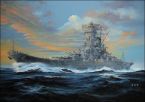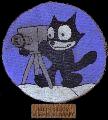obvert
Posts: 14050
Joined: 1/17/2011
From: PDX (and now) London, UK
Status: offline

|
quote:
ORIGINAL: Alpha77
https://aviation.stackexchange.com/questions/50763/what-is-a-typical-altitude-for-a-dogfight
"WWI dogfights would generally be between 5-15000 ft. Aircraft could patrol up to 20,000 ft (yes, without oxygen). The Camel had a service ceiling of 19000 ft, the SPAD XIII almost 22,000 ft.
In WWII, generally between 20-35000 ft over W Europe, under 20000 ft over Russia and in the far east. Bomber escorts in W Europe started out hanging with the bomber formations just above at perhaps 25-27000 ft, but later when they were sent to range on ahead, they would patrol at 30-35000. The FW190-A8 had a service ceiling of a bit over 37000 ft, and the Mustang just over 40, but at service ceiling there is almost no spare energy available for maneuvering so you couldn't actually fight at that altitude for any length of time.
In both WW's, once started the fighting aircraft would get lower and lower as they consumed energy, that would normally be available for climbing, in maneuvering for advantage, and in long fights they would end up near the ground.
An interesting aspect of high altitude combat in unpressurized airplanes was the risk of getting the bends from extended exposure to the low atmospheric pressure above 25000."
https://www.quora.com/At-what-altitude-did-fighters-in-WW2-typically-dogfight#:~:text=It%20depended%20what%20period%20in,In%20Europe%20%26%20N.&text=Fighting%20in%20the%20Pacific%20was,to%20~20%2C000-25%2C000%20ft.
"It depended what period in the war & what theatre of war. In Europe & N. Africa there was an initial escalation of combat height from the Battle of Britain onward to ~ mid 1942, with the heights frequently exceeding 30,000 ft & some interceptions reaching nearly 40,000 ft. That trend reversed in mid ’42 & combat heights fell sharply to the range of 15,000-25,000 ft. Apparently the combatants discovered that the war itself was lower down & the fighters had only been engaging other fighters up high, rather than trying to stop bombing & strike raids in the sea-level-20,000 ft region.
Fighting in the Pacific was at lower altitudes throughout most of the war in that area — typically ranging from near sea level, up to ~20,000-25,000 ft.
There were, of course, recon flights at great heights, but they seldom involved combat."
It is clear flying at max or up to 3-5k under max altitude with fighters was rare up to 1945 especially in the pacific or eastern fronts.
In game flying that high does not have enough downsides like in reality.If it was more realistic the dive issue would be not a biggie I guess. In particular, flying longer than some minutes at this altitude, while in game fighters can fly long distances at eg. 39k without much penality.
Nothing in game says that planes fly all of the way to and from the target at combat altitude. The altitude we chose is combat related at the endpoint that's chosen.
Aside from issues of reality, in game there is a lot of nuance to the air combat model, and if used independent of limitations imposed by HRs it becomes an intriguing tactical cat and mouse game of layering, altitude and equipment adjustments, and a constant struggle for both players. The Allies generally come out slightly ahead, as they should historically, but the Japanese have a chance to do very well.
It's actually a detriment to fly all of my Allied sweeps at max altitude against my current opponent in mid-45. Because layered CAP is in play, I have to fly at multiple altitudes to sweep, and I have to use specific airframes at those different altitudes, and I have to watch for fatigue, and I have to check each turn to see what he's altered or surprised me with. Each defensive combination at different altitudes requires an adjustment on my part.
Most players don't want this kind of detail aded onto the rest of the complex tasks this game requires. If you do, then ditch the HRs and start experimenting with low layered CAP for the IJ and multiple airframe/altitude sweep/strikes with escort and LR CAP for the Allies.
_____________________________
"Success is the ability to go from one failure to another with no loss of enthusiasm." - Winston Churchill
|
 Printable Version
Printable Version


















 New Messages
New Messages No New Messages
No New Messages Hot Topic w/ New Messages
Hot Topic w/ New Messages Hot Topic w/o New Messages
Hot Topic w/o New Messages Locked w/ New Messages
Locked w/ New Messages Locked w/o New Messages
Locked w/o New Messages Post New Thread
Post New Thread